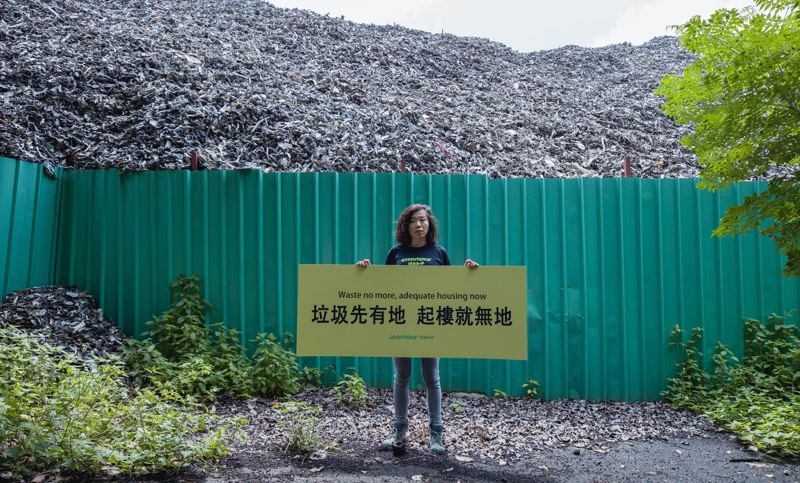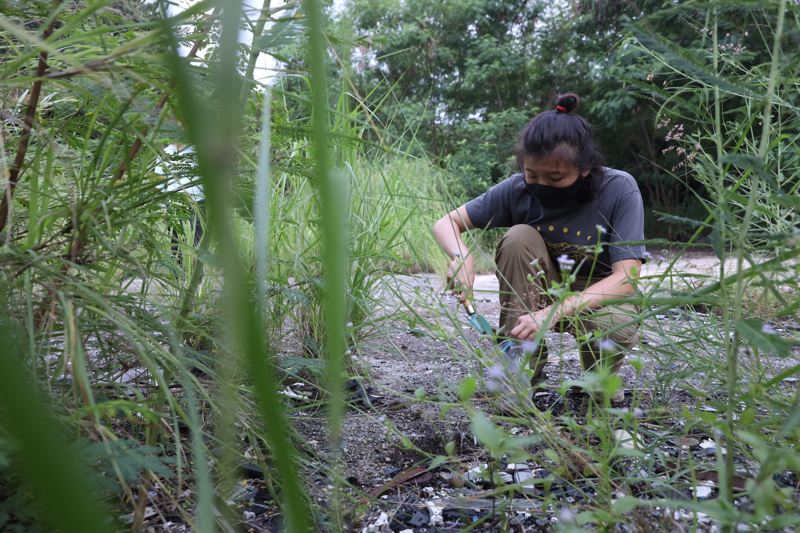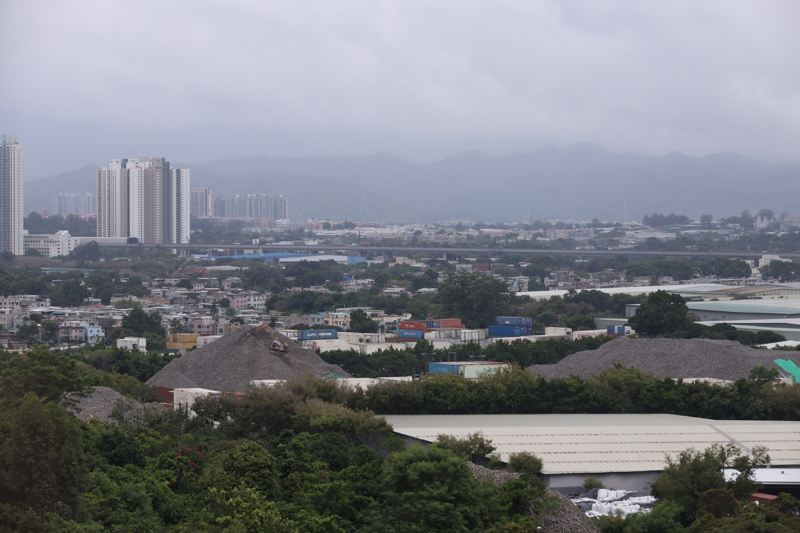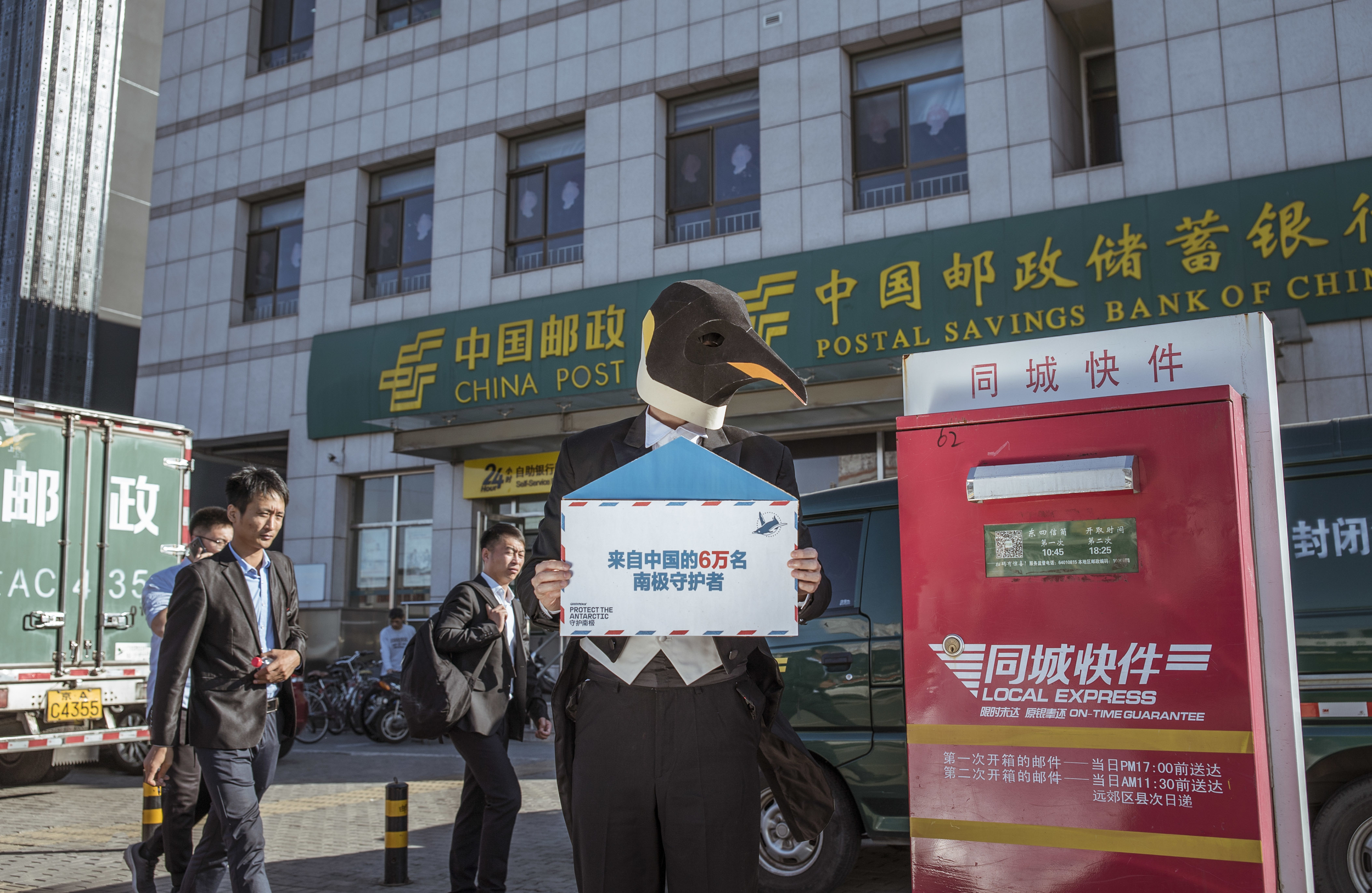Electronic waste is an elephant in the room – it occupies lands, its heavy metal pollutes the environment and loads the landfills. Though countless problems have been revealed and feature media coverage are seen from time to time, the issue persists. Why is it so? Could we do anything about it? Greenpeace decided there were no better alternatives to resolve the issue than conducting field studies at the site.
In a small team, Greenpeace investigated over 70 brownfield sites in Hong Kong for 2 months and reported our findings here with heavy hearts: at least 35 brownfield sites covered over a total of 20 hectares (in size larger than the Victoria Park in Hong Kong) were found to operate in violation of regulations, piling up waste mountains up to 8 meters high. They were composed of huge amounts of waste from aluminium scrap, circuit boards to construction waste at open space workshops, leading to 7 heavy metals in soil exceeding standards. We consolidated what we found into a written report “Massive Mess: Investigation on Unruly Brownfield Operations 2021”.

Whac-A-Mole approach to illegal operations
Every piece of evidence was gathered by the investigation team as a result of sweat and persistence, from route planning, aerial picture shooting to soil sampling, to find out the heavy metal contamination resulted from non-compliance cases of electronic waste disposal.
Members visited over 70 distant sites within 2 months when they mapped out strategic plans to detour from the alerting villagers from obstructing their investigation work. The documentation was obtained through getting through heavy gates to hoardings from one workshop to another, blended with extraordinary mastery of flash shooting skills with GoPro and drones.
“If we expose ourselves, there won’t be a second chance for our next visit. We’ve been working really hard to strike a balance between risk-taking and shooting (for the investigation)”, said Hall Sion Chan, the Greenpeace Campaigner.
The government bodies shall have legitimate power and resources to respond efficiently to any non-compliance cases of electronic waste disposal, yet the number of prosecutions has been low. Only 2 successful prosecutions and a total fine of HK$3,000 were recorded the first year since the disposal licensing control, import and export control and disposal bans at designated waste disposal facilities of regulated electrical and electronic equipment (REE) was imposed in 2018. Remarkably, the non-compliance electronic waste dismantling site Greenpeace discovered 3 years ago is still operating now. An abandoned workshop at Sheung Pak Nai green belt has been piled up with electronic wastes for 4 years. The polluting threat of heavy metals to the environment has been looming.
The team raises questions instrumental to the issue: Has the most appropriate approach been adopted to deal with the non-compliance cases? Would the law enforcement officers spend as much effort to investigate any non-compliance operations as Greenpeace do?
“There shall be a comprehensive development plan on brownfield lands, to prevent non-compliance operations in any grey areas,” the team concluded.
The chic and the tech-waste
“New faces” appear in the tech-waste lately, such as TV decoders, nuclear power and erosive gas filter, and above all, thousands of electric scooters await to be dismantled. Unlike regular metal wastes, they are composed of batteries and circuit boards. The nature of new technical product waste is getting more complicated nowadays, do both the waste disposal vendors and the law enforcement officers realize these electric scooters are not supposed to end up at waste sites at the brownfields?

A once-unsolved mystery nagged in the investigation team’s mind: how have the 8-meter-high waste mountains in Ha Tsuen been formed over time? The team made a preliminary guess that the waste could be plastics disposal. Later on, members found out the mountains of waste were alumni scraps, through fact-checking with the waste collectors and the evidence collected. It has come to our attention that the Chinese government banned the import of solid waste from the beginning of the year. The surge of quantity in alumni waste imported to Hong Kong in the first half of the year, which matches with these waste mountains have been found lately in the local brownfields.
It is estimated that the value of this metal waste could reach over billions of dollars after sorting and cleaning. The cost of the heavy metal contamination could be borne by Hong Kong people and the environment if this unprocessed waste ends up in the local landfills. No wonder the team suspects if any parties involved are equipped with sufficient knowledge and sensitivity to keep the fingers on the pulse of the global trend in the value rise of metals and resources and to protect the city from being exhausted as a foreign waste disposal hub.

Truth Revealed: Public Deserves to Know
Greenpeace announced the results to the media on September 6 and broadcast on Facebook Live presenting the investigation team’s latest report on “Massive Mess: Investigation on Unruly Brownfield Operations 2021” to the general public. We also created a story map (in Chinese) to reveal the information gathered with countless efforts by the investigation team. The discussion on land usage justice shall keep on, and there shall be a comprehensive plan on brownfield development. The city shall by no means sacrifice our countryside and ocean for real estate project development.
“The aerial pictures are incredibly shocking! It is as if we broom the waste to one side and turn our blind eyes to it! Land resources are all-time precious in Hong Kong, yet such a large scale of brownfields have been occupied for waste only for years, visually out of sight from most people in the city. We find it compelling to reveal the truth so that people will know it’s everyone’s business!”

READ:Massive Mess: Investigation on Unruly Brownfield Operations 2021 (Executive Summary)



